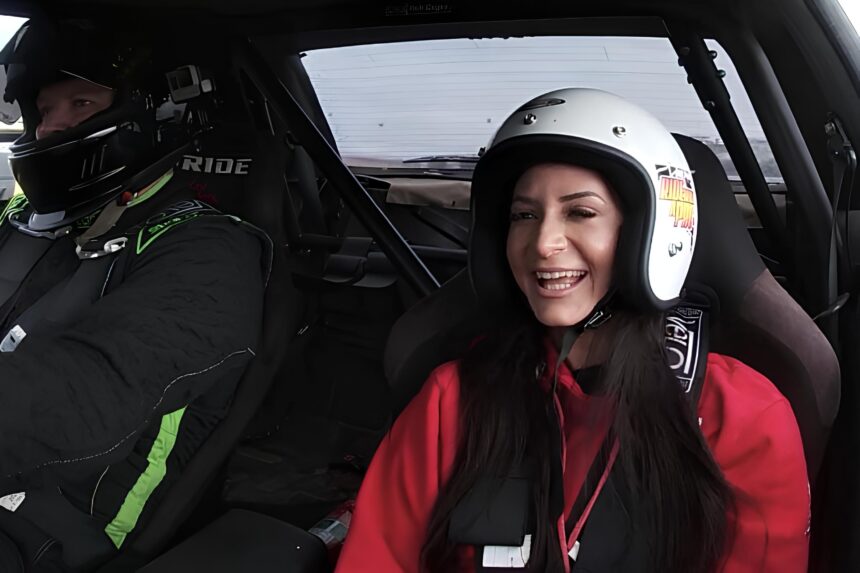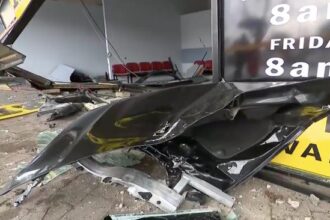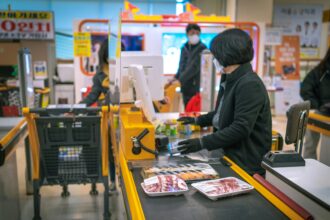A New Kind of Story Emerges
An inspiring story has challenged the binaries of positive and negative and shown that a social-relational approach can change disability narratives, writes Melissa Marsden.
Breaking Past Surface-Level Coverage
A recent article in The Advertiser, based in Adelaide, dives deeper than usual coverage, offering a rare and nuanced look at what it truly means to live with a disability. The piece doesn’t rely solely on superficial sentiment; instead, it aims to shift the narrative entirely.
A Headline That Says It All
The original headline reads: “He doesn’t see me as disabled.” Immediately, readers are drawn in by a powerful statement that implies acceptance, love, and understanding beyond physical limitations.
Personal and Pioneering
In the accompanying image, a young couple smiles at the camera—side by side, confident, and connected. But as readers delve into the article, the true story emerges, centered around Christina Vithoulkas, now widely recognized as Australia’s first female para drifter.
Naming the Person, Not the Disability
The feature title—“Australia’s first female para drifter Christina Vithoulkas opens up on what’s next”—transforms the subject from an anonymous face to a named individual with a groundbreaking profession. The narrative becomes personal and inspiring, painting Christina not just as a survivor, but as a pioneer.
Dismantling “Inspiration Porn”
Media often leans heavily into the trope known as “inspiration porn”, a term used to describe the portrayal of people with disabilities as objects of inspiration solely based on their disability. This framing, although well-meaning on the surface, often does more harm than good by reinforcing ableist narratives.
Trauma Doesn’t Define the Person
One such example is the ABC’s coverage that dives into Christina’s past trauma, stating:
“A horror motocross crash left Christina Vithoulkas with a fractured skull, lacerated spleen and broken back. Now, Australia’s first female para drifter opens up about life seven years on.”
Beyond Before and After
This kind of language implies a clean division between “before” and “after”—a stark contrast between an ideal life and one “marked” by disability. But as Christina herself articulates, “I knew in that moment that I was paralysed, but my brain was simultaneously visualising the life I had been living and a wheelchair just being an accessory attached.”
A Fluid Understanding of Identity
Her words reject the binary of able-bodied versus disabled. Instead, they offer a fluid vision where identity and ambition transcend physical condition. This shift in perspective forms the essence of a social-relational understanding of disability.
Seeing Beyond the Label
Christina continues: “My partner is the only person outside my family who doesn’t view me as ‘disabled.’” These moments emphasize that perception can be as disabling as the condition itself.
Confronting the Charity Narrative
Her involvement in charity events like the Wings for Life World Run initially raised skepticism. Christina reflects:
“I was initially sceptical about any foundation raising money.”
But she admits the event was profoundly impactful, describing it as “something truly unique.”
Problematic Framing from Advocacy Campaigns
However, the foundation itself uses dramatic language to frame its cause:
“In this moment – while you’re reading this – somebody has injured their spinal cord and will be paralysed. No feeling in their legs, maybe no feeling in their arms or hands either. Immobile. Constantly dependent on the assistance of others. We want to help. As a charity foundation, Wings for Life supports cutting-edge research worldwide. Our big goal: To find a cure for spinal cord injury.”
Moving from Cure to Acceptance
While well-intentioned, such declarations contribute to a cultural obsession with “fixing” disability rather than understanding or integrating it. Christina’s story diverges from this, providing the inspiration readers seek, without glorifying trauma or tragedy.
The Emotional Landscape of Disability
Yet not every person with a disability experiences the same support or internal strength. Christina acknowledges the harsh reactions from those closest to her:
“Friends and family carried a sense of loss and at times felt like [I was at] my own funeral service as everyone mourned around me.”
Why the Social Model Matters
This personal insight unveils an important aspect of disability—the emotional and social weight carried not just by the individual, but by their surrounding community. These are moments when a social-relational model becomes crucial.
Academic Support for a New Framework
Macquarie University academic Kathy Cologon explains:
“Advocates of the social model have worked hard to redefine disability, and the articulation of the social model has resulted in considerable change in the understanding of disability for many people, with the potential for wider cultural change.”
Redefining Disability Through Lived Experience
Further elaborating, she says:
“A social relational understanding of disability holds that: disability is defined by, and exists through, the body’s lived experience. Disability is created based on unequal social relationships that undermine the psycho-emotional well-being of people labelled or designated as ‘impaired’ (and their families).”
A Shift from Fixing to Belonging
These frameworks move away from the reductive concepts of cure versus no cure, or tragedy versus triumph. They emphasize how society itself constructs and sustains disability through lack of accessibility, assumptions, and prejudice.
Love as Normalcy, Not Exception
Even Christina, whose personal journey now includes a loving relationship, admits how unique that sense of normalcy is:
“Whatever was important and meaningful to me would not be impacted by my ability to walk.”
Humanity Beyond the Diagnosis
She adds: “My partner is the only person besides my immediate family who sees me as a human being and doesn’t view me as ‘disabled.’”
Redefining Love, Purpose, and Identity
Her story reveals how love, purpose, and identity are not bound by physical ability. Instead, they flourish when nurtured by genuine understanding and acceptance.
Political Narratives Often Reinforce Tropes
Discussions of disability are often framed in oversimplified narratives—either as tragic tales or as tales of miraculous recovery. But as seen in political coverage, such as that of Ali France, narratives can be manipulated for public sympathy or political points, often reinforcing harmful tropes.
Christina’s Journey as a Counter-Narrative
Christina’s story, however, offers a powerful counter-narrative—one where strength is not in overcoming disability but in redefining what it means to live fully with it. Her journey as a para drifter is not a token triumph but a symbol of broader societal potential when inclusivity becomes the norm.
A Call for Inclusive Storytelling
As disability discourse continues to evolve, stories like Christina’s highlight the importance of moving beyond binaries. The goal should not be to inspire through exception but to normalize through inclusion.
Toward a Socially Just Future
Ultimately, Christina Vithoulkas stands as more than Australia’s first female para drifter. She represents a future where disability is seen through relational, not reductionist, lenses—a world where the question isn’t “How do we cure disability?” but “How do we create a society that supports every body?”






